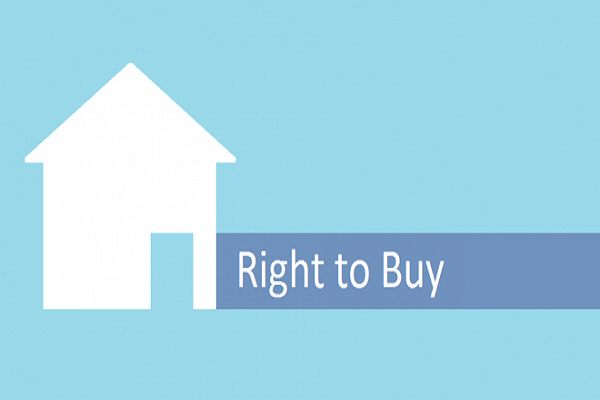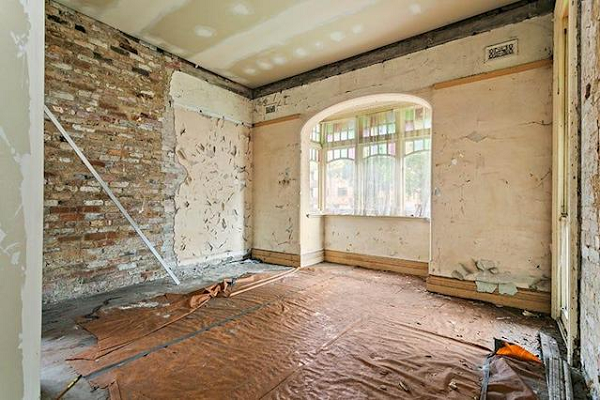What Buy-to-Let Landlords Expect from Their Brokers
Times are changing, and the buy-to-let landscape is becoming increasingly difficult to negotiate.
On one hand, successful BTL investors are reaping the windfall of record-high monthly rents, coupled with long-term capital gains. On the other hand, the withdrawal of countless tax incentives and the growing costs of running a BTL business are driving many established landlords out of the market entirely.
Just as some are racing frantically to buy up as many rental properties as they can to generate generous rent yields, others are liquidating their entire portfolios.
With changes to the BTL landscape come changes to the priorities of landlords and investors when working with mortgage brokers. Independent brokers continue to play an important role in pairing BTL investors with affordable loans and mortgages and overseeing their transitions when remortgaging.
Through consultations with countless landlords, the priorities of BTL property buyers when dealing with brokers in the current climate have become clear. The prominent examples are as follows:
- Paying close attention to long-term interest rates
One of the many lessons learned over the past couple of years is that certainty is a redundant concept. Irrespective of how safe and stable your financial position may appear, you have no idea what is around the corner. This is why a growing number of BTL investors have been setting their sights on longer-term 7-year and 10-year fixed-rate mortgages as a way to at least modestly manage long-term uncertainty.
Brokers are therefore being expected to focus more heavily on long-term interest rates than ever before, as opposed to short-term introductory deals.
- Strong focus on speed and simplicity
Sidestepping the usual complexities and complications is also a top priority for investors in today’s fast-paced market. Reliability and speed of service are fundamental expectations for BTL landlords and investors who want to know that their deals will be done and their transactions completed before any further market fluctuations. In such dynamic times, there simply isn’t room for the kinds of loan applications and property transactions that can take as long as three months to process.
Particularly where competition for high-demand properties is concerned, landlords expect the kind of broker support that puts them right at the front of the queue.
- Independent advice and expertise
The role of the specialist broker is no longer to simply compare the market for the best deals and negotiate the lowest possible rates on BTL products. Instead, it is to act as a trusted advisor and a fully independent intermediary, able to help BTL landlords and investors make all the right decisions in the first place.
And of course, all such advice and input are expected to be offered free of charge to the client.
- Honest and transparent communication
BTL investors and landlords (along with most private and commercial customers in general) now expect nothing but complete honesty and transparency from their brokers. Clear and consistent communication holds the key to good business-client relationships, but it continues to be overlooked by many mainstream providers. Serving as fully independent intermediaries, brokers are trusted to be as brutally honest as needed to ensure their client’s best interests are upheld. No false promises and no overestimating of their own capabilities; 100% honesty and openness from start to finish.
Only then can the client trust the broker to guide them through some of the most important purchase and investment decisions they will ever make.
Do Lenders Have the Right to Withdraw Mortgage Offers?
With the economy going into free fall and the housing market in chaos, Kwasi Kwarteng’s mini-budget has done little to appease the fears of buyers and lenders alike.
The Bank of England has stated that they “would not hesitate” to increase the interest base rates yet again in an attempt to protect the falling value of the pound. Unfortunately, this will lead to the inevitable result for mortgage lenders, who predict that offering competitive interest rates to customers will be far too expensive.
With this in mind, people have many questions regarding the future of the mortgage market and what it means to them. Today we answer a few of these questions.
Will my lender withdraw my mortgage offer?
This is a question paramount to every buyer’s mind who has already been offered a mortgage deal by their lender. In principle, lenders will abide by the offer they have made, according to most brokers. So to answer the question, yes, lenders will honour any offer already agreed upon.
Unfortunately, buyers, first-timers, and movers who have not already made an application will find that the offers available to them will be limited and significantly more expensive.
The previously good mortgage deals have been removed, and when new offers make a re-appearance, it will be considerably less of a “deal” and markedly more expensive.
If your application for a good deal is complete, then you are likely to be lucky enough to have secured a specific rate; however, if it is just “agreed in principle,” the likelihood is that the rate offered is not binding and therefore can be withdrawn by the lender.
It is important, however, to note that if you are already on a deal with a fixed interest rate, the lender cannot change the rate until the deal expires.
Will my home be repossessed?
With many fixed rates coming to an end and an almost certain increase in monthly mortgage repayments, many homeowners are asking themselves if their homes could be repossessed. Although this is a possibility, the whole process of repossession is lengthy for lenders and one they will try to avoid.
It’s more likely that a lender will offer some sort of payment plan for those struggling with their monthly mortgage repayments.
If you are or feel you may, in the near future, not be able to meet your payment obligations, it is imperative that you seek help and advice. There are various charities, such as Citizens Advice, that are there to offer any support you may need.
What support can we expect from the government?
Following the pandemic, we have become somewhat accustomed to the government handing out support in various ways, for example, through furloughs and grants. Unfortunately, this will not be the case for homeowners struggling to pay their mortgages.
Instead, they will be doing what they can to get the economy back on track, although to date they have not been too successful in this endeavour.
Will renters be affected?
Well, mostly, yes. If landlords find themselves paying higher buy-to-rent mortgage payments, they will have little choice but to pass at least some of these increased costs onto their tenants.
Another side effect of the market chaos is a shortage of rentable properties, should landlords decide to sell up. With demand higher than supply, an inevitable increase in rental rates will be unavoidable due to the increased competition.
Renters who wish to get their foot on the property ladder will most likely need to wait longer to buy due to first-time mortgages being so expensive.
Why is the Bank of England increasing interest rates?
The theory is that by increasing base rates, people will be less likely to borrow and spend and more likely to save. This hopefully results in less demand for products and services, which in turn will result in prices going down.
With inflation at five times its target rate, the Bank of England is expected to keep increasing interest rates in order to get control over the spiralling inflation rate.
Although in theory, this should work, it is a balancing act that needs to be executed well, as we do not want the economy to slow down too much.
Do mortgage interest rates always fluctuate?
Yes, but we need to consider some factors, such as the fact that for the last decade, interest rates have been relatively low. Now that rates are on the rise, it has been a shock for many that even a small rise in rates has translated into quite significant rises in monthly payments. This is largely due to the amount buyers have borrowed due to high house prices and stagnant wages.
How will the rise in rates affect my mortgage?
The rise in base rates will result in mortgages becoming significantly more expensive. This will in turn have a negative effect on housing market activity, as buyers will be more hesitant to act now and will be more likely to be waiting to see what the future holds.
Should the rates stay high for a long period of time, mortgages will become unaffordable, many will sell, and house prices will inevitably decrease.
Mortgage Lenders Pull Mortgages as Unstable Property Market Continues to Cause Havoc for Buyers
A chaotic financial market has led many mortgage lenders to remove the availability of many mortgage products for new buyers following the Chancellor’s mini-budget announcement, released last week. Although thought to be a temporary measure by lenders, this is bad news for buyers wishing to find good deals when looking for new mortgage products.
The UK’s largest lender, Halifax, has removed all fee-paying products and replaced them with full fee-paying mortgage products. This means that customers can no longer pay an arrangement fee in return for a better (lower) interest rate than was previously available.
In an extreme move, Skipton Building Society and Virgin Money have taken the step of removing their entire range of products with the aim of relaunching new products later in the week.
The announcement from Kwarteng has sent the value of the pound and government bonds into free fall. The mini-budget was said to be created to help the growth of the economy by funding tax cuts with government lending.
“As a result of significant changes in the cost of funding, we’re making some changes to our product range,” a Halifax spokesperson said.
The 5-year government bond yield increased by a whopping 96 basis points on Monday and Friday, signifying the highest rise in borrowing costs since 1987, the year that Refinitiv began.
“Following last week’s (Bank of England) meeting and the government’s subsequent mini-budget, we continue to see the market response unfold,” Skipton Building Society said in an email to brokers.
“In response, we will be temporarily withdrawing our new business product range with immediate effect.”
New customers were advised that Virgin Money was intending to pull its mortgage products at 8 p.m. on the 26th.
“We continue to monitor the situation closely and currently plan to relaunch products for new customers towards the end of the week,” Virgin Money said.
Mortgage brokers advised that the likelihood of lenders making significant changes to mortgage product offerings was high.
“The uncertainty around the risk of an emergency rate rise is likely to see other lenders withdrawing products or increasing rates dramatically until they know the extent of how this all pans out,” said Jamie Lennox, director of Dimora Mortgages, a broker.
The Bank of England has suggested that they will adjust interest rates in order to bring inflation back to target levels.
“That will feed into higher mortgage rates, and, as always, it’ll be the taxpayer left carrying the can,” said Lewis Shaw, founder of broker Shaw Financial Services.
London Property Purchases Account for One-Third of All Stamp Duty Collected
A study conducted by Access Legal, a law technology specialist, has revealed a major disparity in the amount of stamp duty being paid back to home buyers in some regions of the country compared to others. Having analysed average stamp duty payments across 100 major towns and cities, Access Legal found that almost two-thirds of total UK stamp duty contributions come from just one region.
Over the six months following the return of regular stamp duty rates, the Treasury collected £679 million in stamp duty payments from these 100 towns and cities. Of which, approximately £442 million was generated entirely from property sales in London.
Bristol came in at second place with a comparatively paltry £19.1 million in stamp duty contributions, followed by Reading with a combined £9.78 million in stamp duty bills.
The top five stamp duty land tax contributors were rounded out with Cambridge and St Albans.
Londoners paying more than £26k for SDLT
Given the disproportionately high property prices in and around London, it came as no surprise that home purchases in the capital carried the highest stamp duty payments. On average, property purchases in London were found to have a stamp duty requirement of £26,133.
The second and third most expensive stamp duty regions of the UK are St Albans and Oxford, where home buyers can expect to pay £21,213 and £18,976, respectively.
Access Legal also found that all 10 of the top-paying stamp duty towns and cities were in the south, while all 10 lowest-paying towns and cities were in the north. Specifically, total combined SDLT contributions were found to be the lowest in Blackpool, Hartlepool, Bradford, Hull, and Sunderland.
The temporary stamp duty holiday came to an end some time ago, but there is still an exemption on property purchases up to a value of £300,000. Given the major differences in average house prices across different regions of the UK, it comes as no surprise that stamp study contributions also vary significantly from one area to the next.
In Blackpool, for example, the average stamp duty payment on properties purchased over the six-month period was just £341.
Demand remains high, outstripping available inventory
Commenting on behalf of Legal Bricks, a leading conveyancing software provider, director Mike Connelly suggested that the withdrawal of the stamp duty holiday has had little to no impact on buyer demand.
“We all know that buyers pay a premium to live in the South East, especially London, but the figures show just how much they’re paying in stamp duty tax alone compared to people in other parts of the country,” he said.
“First-time buyers, in particular, who also have to pay thousands of pounds in SDLT, will see a real dent in their deposits or have to borrow more on their mortgage to pay it. This suggests that even with the SDLT holiday coming to an end, demand for housing in some parts of the country has continued to be high.”
Meanwhile, mortgage expert at Mojo Mortgages, Claire Flynn, praised the temporary stamp duty holiday for helping many first-time buyers find their way onto the UK property ladder.
“The stamp duty holiday was good news for many, seeing house sales reach record levels and helping to alleviate some financial pressure of buying a property for first-time buyers and existing homeowners,” she said.
“While first-time buyers still benefit from an exemption on properties up to £300,000, house prices are currently at record highs, which means we’ll likely see a considerable increase in the number of new homeowners paying for stamp duty.”
“This will be exacerbated by the end of the help-to-buy scheme in March 2023, which could make it even more difficult for those trying to get their foot on the property ladder in areas such as London, Bristol, and Reading where the average cost of a home exceeds the £300,000 exemption threshold.”
Time Running Out for Prospective Help to Buy Scheme Participants
The clock is ticking for eager participants looking to take advantage of the Help to Buy scheme in England, which is set to be withdrawn in March next year. Launched in 2013 and heralded as an effective initiative to help thousands buy their first homes, the scheme has also been criticised by many for consuming billions of pounds of taxpayers’ money.
Help to Buy has also done little to solve the problem of skyrocketing property prices and has, for the most part, played directly into the coffers of the housebuilders taking part in the scheme.
Modified on a number of occasions over the past decade, the initiative will be withdrawn in its entirety at the end of March 2023.
However as it takes time for interested parties to be successfully enrolled in the initiative, the deadline for applications falls much sooner. In fact, anyone looking to take advantage of Help to Buy will now have to submit their applications no later than October 31.
This semi-official deadline date was only revealed in May, and subsequent polls have discovered that almost three-quarters of first-time buyers are unaware that this is technically when the scheme comes to an end.
Is now the time to buy?
With the deadline on the horizon, housebuilders are increasingly pushing their available and near-completed projects on interested parties. But there are those within the real estate and finance sectors who are warning overly eager parties of the risks of diving in at the deep end without full and careful forethought.
Sarah Coles, senior personal finance analyst at investment firm Hargreaves Lansdown, has urged caution among those who may be caught up in the final rush for available homes.
“You might be tempted to race for the door before it closes,” she said.
“However, if you’re in too much of a rush to get to grips with what you’re getting into, you could be in for a nasty surprise in five years’ time.”
Help to Buy was launched by George Osborne in 2013 with the aim of getting the housing market back in gear after the financial crisis. As it stands, the scheme provides homebuyers with the opportunity to borrow between 5% and 20% of the full purchase price of a newly built home (40% in London) from the government. A standard 5% deposit is also payable by the buyer.
This means that in London, those who qualify for the scheme need only arrange a mortgage for 55% of a property’s total value. The scheme is only available on new-build properties, and total property values are capped differently in different regions of the country, from £186,100 in the north-east to £437,600 in the south-east to £600,000 in London.
The government loans are interest-free for the first five years, after which interest applies, starting at a low rate of just 1.75%.
Who is suitable for buying assistance?
Technically speaking, anyone over the age of 18 can apply to take part in the Help to Buy scheme. But as organising a 75% mortgage (on average) is likely to prove difficult in most parts of England (where average house prices are currently hovering at around £300,000), the scheme does not offer a great deal of relief for low-income individuals and households.
Instead, experts continue to state that the Help to Buy scheme in its current form is really only of any use to those with a high annual income level but low savings.
In addition, as the living cost crisis continues to escalate, coming up with even a 5% deposit in many parts of the country (London especially) is likely to prove impossible for most average earners.
Johnson’s New Mortgage Affordability and Right to Buy Plans Prompt Outrage: Here is How We Can Help
There was never any doubt that Boris Johnson’s plans to help as many Brits as possible get on the housing ladder would be anything but a big disappointment. We already knew much of what he was going to say before his already infamous remarks were voiced in Blackpool this week.
“We’re going to look to change the rules on welfare, so 1.5 million working people who are in receipt of housing benefits and want to buy their first home will be given a new choice: to spend their benefit on rent as now, or put it towards a first-ever mortgage,” he said.
“Doing so removes a significant barrier that currently prevents hundreds of thousands of families from buying their own home.”
“We’re going to explore discounting lifetime and Help to Buy ISA savings from Universal Credit eligibility rules”.
Support for ‘trapped’ housing association tenants?
In addition to the above, he talked about an extension to the existing Right to Buy scheme, which will give up to 2.5 million housing association households the opportunity to purchase their properties at a discounted price.
“They’re trapped; they can’t buy; they don’t have the security of ownership; they can’t treat their home as their own or make the improvements that they want,” he said.
“So, it’s time for change. Over the coming months, we will work with the sector to bring forward a new Right to Buy scheme.”
All of this is somewhat predictable, as was the reaction from those within the housing and mortgage sectors who were quick to lambast the ailing prime minister.
“There are real practical problems; to qualify for Universal Credit, you’ve got to have savings of less than £16,000, which means that most people who the government is trying to reach with this announcement are not going to have anything near the amount that they need for a deposit,” said Shadow Levelling Up Secretary.
Her sentiments were echoed by Edward Checkley, managing director of London-based property finance specialists, who highlighted the dangers of plunging struggling households into further debt.
“This policy would go against all sensible lending practices, considering housing benefit is typically awarded to assist with rental payments if unemployed or on a low income, and to households with less than £16,000 of savings,” he said.
“With the cost-of-living crisis already affecting lower-income households, how can saddling them with debt be responsible?”
Elsewhere, the founder of Mansfield-based Shaw Financial Services, Lewis Shaw, gave the prime minister both barrels and joined the growing call for his resignation.
“Mortgage lenders already allow people to use state benefits to support a mortgage and have done so for years. It varies from lender to lender exactly which state benefits they’ll take into account, so I’m not sure what a new policy could be,” he said.
“It’s almost as though they don’t know how the mortgage market works already. If we’re to believe they want higher LTV mortgages, there’s only one place to go, and that is 100% LTV. However, again, we already have 100% LTV as a couple of lenders allow you to take a personal loan as a deposit.”
“It’s more bluster from the blond blancmange. Just resign for God’s sake and let someone with an ounce of competence and integrity have a crack.”
The ‘strength in numbers’ approach to home buying
Increasingly, millions of prospective first-time buyers are counting themselves out of the running as far as home ownership is concerned. Even when coming up with the required deposit to qualify for a mortgage is possible, skyrocketing house prices are pricing many out of contention.
With average house prices now hovering around £300,000, lenders’ policies on salary-based maximum mortgage sizes are proving increasingly unrealistic. Capped at around 4.5 times the applicant’s salary, even a £35,000 per year earner would fall drastically short of the mark.
A mortgage of £157,000 has been more or less useless across much of the UK for years, thus painting an even more unfortunate picture for many millions earning closer to £20,000.
This is where a product known as a Joint Borrower Sole Proprietor (JBSP) mortgage could help; a JBSP mortgage works by effectively combining the annual incomes of up to four family members in order to increase the maximum loan amount.
Responsibility for the mortgage is effectively shared between all who sign in to the agreement, usually the person or couple looking to buy their first home, and the parents of one of the buyers.
Like a conventional mortgage, a JBSP mortgage can be taken out with an LTV as high as 95%. Maximum loan sizes and terms vary on the basis of the ages of the supporting applicants, and all borrowers named in the application must be in employment at the time.
Where the conventional pathway to homeownership seems implausible at best, considering the alternative options with the help and support of an experienced broker is highly recommended.
For more information on any of the above or to discuss the benefits of joint borrower-sole proprietor mortgages in more detail, contact a member of the team at UK Property Finance today.
What You Need to Know About Buying Homes at Auction
Whether you are looking to pick up your dream home at a rock-bottom price or turn a quick profit with a fixer-upper, auction property purchases can be just the thing. Buying homes at auction is quicker and easier than becoming part of a conventional property chain, and the savings on offer are unbeatable.
But as properties purchased at auction call for prompt payment, typically within 28 days, conventional mortgages have little practical value. With the typical residential mortgage currently taking around three months to arrange, this 28-day payment deadline calls for an alternative funding solution.
The benefits of property auctions
One immediate benefit of buying properties at auction is the speed and simplicity of the transaction. Within 28 days, the property purchase and transfer process in its entirety is complete. You benefit from the lower prices afforded to cash buyers, and there is zero risk of being ‘gazumped’ by competing bidders.
If yours is the winning bid on the day, the property is yours, and at the exact price quoted.
In addition, a much broader range of homes go under the hammer at auction than appear on the conventional property market. Homes that need to be sold as quickly as possible, properties in need of repairs and renovations, and non-standard properties considered ‘unmortgageable’ by major banks—all potential bargains in the making.
You can even buy rental properties at auction that already have tenants living in them, enabling you to begin collecting regular rent payments in less than a month.
The drawbacks of property auctions
On the downside, the shorter transaction times associated with auction property purchases can prove problematic. If your bid is successful, you will be expected to pay a non-refundable reservation fee on the spot.
This may be 2.5% of the property’s agreed price (plus VAT) or a set fee of around £5,000. The contracts do not need to be signed and exchanged right away, but you will forfeit this initial reservation fee if you back out of the deal.
Upon signing the contract and agreeing to purchase the property, you will be expected to pay a 10% deposit. At this point, you will usually have 28 days (sometimes slightly longer) to come up with the rest of the money.
Another drawback to property auctions is the risk of being outbid, which could happen after paying for a formal survey of the property. There are also no guarantees that yours will be the winning bid, irrespective of how many lots you bid on and how many auctions you attend.
Financing an auction purchase
The time-critical nature of auction property purchases calls for something much swifter than a conventional mortgage. In addition, it is essential to arrange the necessary funding before the auction, in the form of pre-approval or a decision in principle. This will enable you to access the funds you need if your bid is successful without having to start your application from scratch.
Most buyers pay the 10% deposit on the homes they buy at auction out of their own pockets, or perhaps by way of a personal loan or a credit card payment on the day. It is therefore important to ensure you have access to this 10% deposit on the day itself, or your bid will be cancelled and the property sold to someone else.
Bridging loans for auction property payments
One of the most convenient and cost-effective ways to fund an auction property purchase is bridging finance. Where approval is obtained in advance, a bridging loan can be arranged and accessed within a few working days.
Bridging finance can be secured against most types of property or land and can also be used to purchase any type of property, irrespective of its condition. This makes it a particularly suitable facility for auction property purchases, where non-standard homes in questionable states of repair often go under the hammer.
A strictly short-term facility, bridging finance is designed to be repaid within a few months and charged at a monthly rate of around 0.5%. It can therefore be ideal for investors looking to flip properties for fast profits, using the funds raised at the point of sale to repay the loan.
It is also possible to repay a bridging loan by transitioning it to a conventional mortgage or similar long-term repayment facility.
Auction Preparation
In the weeks and months leading up to an auction, full details of the properties set to go under the hammer will be released. This will include a “guide price” for each home, which in most instances will be significantly lower than the price it sells for.
If there is a property you are interested in buying, you will need to arrange an in-person viewing and a professional survey. Particularly if it is a home in need of renovations and repairs, you need to know exactly what kind of work will be needed to bring it up to an acceptable standard.
At this point, you could also contact a local architect or builder to provide you with an estimate regarding the proposed renovations. They may be willing to conduct a survey and provide an estimate for free if you subsequently use their services if and when your bid is successful.
Take a good look at the legal pack for the property you intend to buy and have a solicitor examine its contents on your behalf. If this is to be your first property auction, visit one or two auctions as a visitor in advance to get a feel for how the whole thing works.
On the day of the auction
Arriving early will give you the best shot at securing a good seat in the auction room. Ideally, you should be in a spot where you can see your competing bidders but also where the auctioneer can clearly see you.
When the auction begins, don’t be tempted to exceed your budget, and try to keep your emotions in check. Even if you have your heart set on a property for sale, you need to remain grounded and bid objectively.
If your bid is successful, you will need to provide two forms of identification, along with evidence that you can pay the deposit.
Should the property you are interested in fail to sell, having not reached its reserve price, request the contact details of the seller; you may be able to negotiate with them directly and perhaps pick up the lot for less than you intended to spend.
Can you buy property at an auction with a mortgage?
In terms of conventional mortgages, the answer is no. Based on standard mortgage processing times alone, it would be practically impossible to arrange a traditional mortgage within the 28-day time limit.
There may be an occasional exception to the rule where an agreement is reached with a lender in advance to secure the required funds as promptly as possible. But this simply isn’t an option with most major lenders, where typical mortgage application processing times average around 12 weeks.
In addition, many (if not most) of the properties that go under the hammer at auction would not qualify for a conventional mortgage with a mainstream lender. Auction properties are often deemed ‘non-standard’ or ‘unmortgageable’ due to their repair and renovation requirements.
Fast-access funding is available in the form of bridging finance, along with specialist auction finance and development finance loans for established investors. Issued as short-term facilities, fast-access loans like these can be repaid using longer-term mortgages once the property has been restored to an acceptable standard.
Consult with an independent broker ahead of the auction to discuss the most cost-effective funding options available.
What happens if you can’t meet the completion deadline?
If a buyer is unable to pay for their property in full within the 28-day deadline, the transaction is cancelled, and they forfeit their deposit. Depending on the terms and conditions of the agreement, they may also be liable for the costs of listing the property once again at a future auction.
However, there is usually some leeway where buyers raise their issues with the vendor ahead of time. For example, if you simply need an extra few days or weeks to come up with the money, they will most likely demonstrate a good deal of flexibility.
After all, it is in nobody’s best interests to take the whole thing back to the drawing board.
If you have any questions or concerns regarding your ability to meet the completion deadline, ensure they are discussed with the seller at the earliest possible stage.
Pros and cons of buying at an auction
In summary, a brief overview of the pros and cons of buying properties at auction:
Pros
- The opportunity to secure an unbeatable bargain
- A much faster and simpler transaction
- No reliance on risky property chains
- Zero risk of being gazumped by competing buyers
- A broader range of properties to choose from
Cons
- There are no guarantees you will walk away with a property
- Full payment is required within 28 days.
Auction property purchases can therefore be advantageous in many ways, but they will always call for careful planning and forethought.
For more information on how to fund auction property purchases or to discuss the benefits of buying at auction in more detail, contact a member of the team at UK Property Finance today.
How to Mortgage an Uninhabitable Property
Uninhabitable homes are not without their points of appeal. Particularly in today’s housing market, an affordable ‘fixer-upper’ can be just the thing to sidestep impossibly high property prices.
With an uninhabitable home, you have the opportunity to buy into a desirable location and gradually shape it into the home of your dreams. Unfortunately, the vast majority of lenders fail to see the potential in these ‘non-standard’ homes.
Consequently, most homes considered uninhabitable at the point of sale are also considered unmortgageable. As the name suggests, this means that conventional borrowing options are out of the question.
But this doesn’t mean that affordable financing for uninhabitable properties is unavailable. It simply means you have to extend your search beyond the High Street with the help and support of a specialist broker.
What makes a home uninhabitable?
All lenders have their own policies regarding which types of properties are considered unmortgageable.
In most instances, any of the following will classify a home as uninhabitable:
- There is no working bathroom or kitchen inside the property.
- Inadequate protection from adverse weather (windows and rain)
- Issues with mould or dampness that could be unhealthy
- Staircases considered dangerous or in an unsafe condition
- A lack of basic security, such as solid doors and locks
- Any kind of non-standard material used in its construction
- The presence of asbestos or Japanese knotweed
- Any potentially dangerous structural issues
Even if the required repairs and renovations are fairly straightforward, securing a conventional mortgage for homes affected by these issues is practically impossible. Irrespective of how cheap the property may be and the applicant’s financial status, their request for funding will be refused outright.
Does the property need a working bathroom and kitchen?
These are the two rooms major lenders consider most important of all when it comes to a home’s appropriateness for habitation. If either the kitchen or bathroom is not in good working order and in acceptable condition, a mortgage will not be issued against the property.
This applies to both home buyers and buy-to-let investors alike, who are restricted to properties with functional bathrooms and kitchens. Even if the buyer’s plan is to tear out both rooms and have them fully refitted, their application will be rejected.
Does the property need to be weatherproof?
Yes, an appropriate level of weatherproofing is needed for a home to qualify for a conventional mortgage. This basically means that whatever the weather, the occupants of the property and its structural integrity must be sufficiently protected.
How about central heating?
Policies again vary with regard to central heating, given how many older properties do not feature such installations. The surveyor’s report on the property will usually determine the outcome, as they may deem the property to be safe, warm, and habitable in the absence of a central heating system.
Are listed buildings categorised as unmortgageable?
It depends entirely on their state of repair at the time they are placed on the market. Even so, qualifying for a mortgage for a listed building can be complex and long-winded.
During the inspection, it is highly likely that the surveyor will uncover a long list of essential repairs and specialist restoration requirements; the older the property and the more unusual its configuration, the higher the likelihood of ‘non-standard’ issues affecting its eligibility for a mortgage.
If you are considering purchasing a listed property of any kind, consult with an experienced broker in advance to discuss the available funding options.
Does asbestos render a property uninhabitable?
The presence of asbestos is always concerning, but its location and prevalence will determine whether it affects the mortgage on a property.
For example, if asbestos is present in small quantities and has not been damaged, a mortgage valuation may simply recommend its removal before the purchase goes ahead. Likewise, an undamaged asbestos roof is not frowned upon in the same way as other asbestos-containing materials and components.
But if the presence of asbestos in a property is deemed a direct threat to the safety of its intended occupants, it is highly unlikely it will qualify for a mortgage.
What is a non-standard roof in mortgage terms?
Mortgage lending policies based on roof materials and configurations differ from one lender to the next. Some types of roofs that could make it more difficult to qualify for a mortgage include the following:
- Flat Roofs With a flat roof, it will typically be the condition of the roof and the materials it comprises that determine whether it affects mortgage eligibility.
- Felt Roofs: Many mortgage providers consider felt roofing to offer inadequate protection and may therefore refuse to lend against homes that feature it.
- Thatched Roofs: Qualifying for a mortgage with a traditional thatched roof can be surprisingly difficult unless comprehensive evidence of its condition and safety can be provided.
- Tin Roofs: Several factors are taken into account when assessing mortgage eligibility for homes with tin roofs, including their size, configuration, and general state of repair.
If you are considering buying a property that may be affected by any of the above issues, call UK Property Finance anytime for an obligation-free consultation.
Mortgage valuations after essential repairs
Some lenders will agree to issue mortgages for ‘problematic’ properties like those listed above, but only after the required repairs and renovations have been conducted. The process involves feeding back to the estate agent or vendor and requesting that the work be conducted on your behalf.
Unfortunately, this means spending money on a home that you have not yet taken ownership of. In addition, there is no guarantee that the lender will subsequently issue a mortgage if they are not completely satisfied with the condition of the property.
It is therefore a completely unrealistic option for most prospective buyers and one that must be approached with extreme caution.
Bridging loans for uninhabitable property purchases
One of the simplest and most affordable ways to fund the purchase of an uninhabitable home is with bridging finance. A bridging loan is a strictly short-term facility for major purchases and investments, with significantly fewer restrictions than those that apply with conventional mortgages.
From uninhabitable homes to auction property purchases and more, a bridging loan can be used for any legal purpose.
Here is how bridging finance can be used to purchase an uninhabitable home:
- A property in need of a new kitchen and bathroom goes under the hammer at auction for significantly less than its true market value.
- The buyer obtains pre-approval for a bridging loan to cover the costs of the purchase and the subsequent renovations.
- Their bid is successful, they pay the 10% deposit on the day, and the bridging loan agreement is finalised.
- The funds needed to pay for the property and the necessary renovations are released within a few working days.
- The property purchase goes ahead, and the remaining funds are used to install a new kitchen and bathroom.
- At which point, the home is once again considered habitable and is eligible for a conventional long-term mortgage.
The short-term bridging loan can subsequently be transitioned to a standard mortgage, enabling the buyer to repay the balance on their home over several years or decades. In the meantime, the bridging loan has been accruing interest at a rate of around 0.5% per month, adding up to a hugely cost-effective transaction.
For more information on bridging loans for uninhabitable property purchases, contact a member of the team at UK Property Finance today.
Can I use a second-charge mortgage to buy an uninhabitable property?
Another option for getting around the usual mortgage obstacles is to consider a second-charge mortgage. This is where you take out a second mortgage against the equity you have built up in your home.
For example, if you have repaid £200,000 on your £300,000 mortgage, you have £200,000 in equity. This could then be used to procure a second-charge mortgage with an LTV as high as 75%, enabling you to borrow around £175,000 against your current home.
These funds could then be used to purchase an unmortgageable property as a cash buyer, and the second-charge mortgage can be repaid when your property sells.
If you have built up enough equity in your current home, this can be one of the most cost-effective ways to invest in an uninhabitable home.
For more information on any of the above or to discuss uninhabitable property investments in more detail, contact a member of the team at UK Property Finance today.








